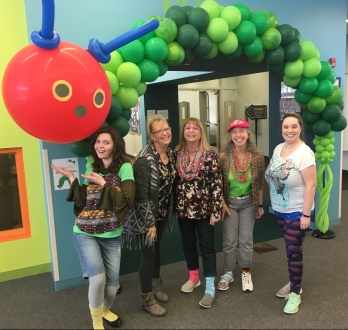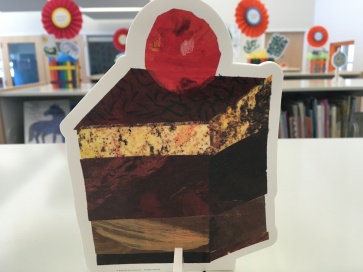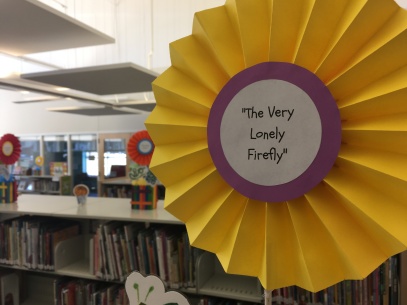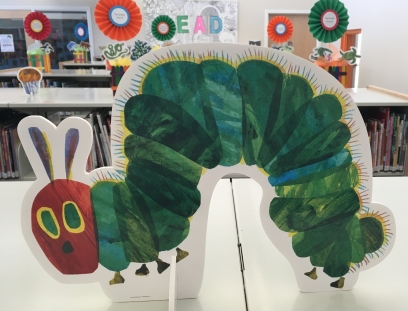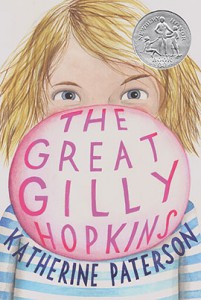 October 31st isn’t just for dressing up in a silly costume and mooching candy off your neighbors. This year, October 31st means that award winning author Katherine Paterson will turn 87. Her books have won dozens of awards, including two Newbery medals and a Newbery Honor Award.
October 31st isn’t just for dressing up in a silly costume and mooching candy off your neighbors. This year, October 31st means that award winning author Katherine Paterson will turn 87. Her books have won dozens of awards, including two Newbery medals and a Newbery Honor Award.
In honor of her upcoming birthday, I decided to read her Newbery Honor winning book, The Great Gilly Hopkins. In it, Paterson captures the complex inner life of a foster child who appears indifferent and tough on the outside, but on the inside, struggles with a deep need to belong. The book is narrated from Gilly’s perspective, beginning with her arrival at yet another foster home. Readers watch Gilly grow and change as she chases fantasies of the mother who abandoned her and wrestles to form new connections.
Paterson explains in her author’s note that she wrote this book after some rough experiences as a foster parent. As issues would come up, she found herself using the short-term nature of foster parenting as an excuse for not fully investing in her foster kids. “I was appalled” she writes. “How would I feel if the world treated me as though I were disposable? I wrote the book to answer that question” (212). 
At the climax of the book, Paterson poignantly describes Gilly’s need for her permanent, non-disposable identity to emerge and be recognized. Gilly wants,
To stop being a ‘foster child,’ the quotation marks dragging the phrase down, almost drowning it. To be real without any quotation marks. To belong and to possess. To be herself, to be the swan, to be the ugly duckling no longer─Cap O’Rushes, her disguise thrown off─Cinderella with both slippers on her feet─Snow White beyond the dwarfs─Galadriel Hopkins, come into her own. (Paterson 176-177)
We see Gilly reacts to the feeling of being “disposable” in a variety of escapades and internal struggles throughout the book. In an interview with “Reading Rockets,” (a national public media literacy initiative), Katherine shares that she avoids making her characters the perfect example. Gilly Hopkins remains human and flawed on her coming-of-age journey. Paterson says,
Gilly is not what you’d call an admirable character. In fact, the first time someone told me she was a wonderful role model for today’s children, I nearly died. I thought, ‘Do you really want a role model for your children who lies and steals and bullies the handicapped and is terribly racially prejudiced? I don’t.’
But, of course, she’s a very angry child, and she acts out her anger in very inappropriate ways. We understand why she’s angry, but she has to change, or the book fails as far as I’m concerned. (Reading Rockets Interview)
 Paterson herself seems like a woman willing to change, especially when it comes to her perspective on people who are different from her. Paterson grew up as a missionary kid in China, until her parents moved away as refugees from WWII. They moved back to China, but had to leave again when war with Japan began. Interestingly, Paterson would move to Japan after pursuing higher education in English literature, Bible, and Christian Education. (Reading Rockets Biography). Paterson notes that having a friend from Japan in graduate school changed her perspective on Japanese people, so much that she would enjoy four years in a country whose people once terrified her. Paterson says that books provide personal connections to countries and cultures we may never directly encounter. Through stories, we get to know people as people, instead of stereotypes (Reading Rockets Interview).
Paterson herself seems like a woman willing to change, especially when it comes to her perspective on people who are different from her. Paterson grew up as a missionary kid in China, until her parents moved away as refugees from WWII. They moved back to China, but had to leave again when war with Japan began. Interestingly, Paterson would move to Japan after pursuing higher education in English literature, Bible, and Christian Education. (Reading Rockets Biography). Paterson notes that having a friend from Japan in graduate school changed her perspective on Japanese people, so much that she would enjoy four years in a country whose people once terrified her. Paterson says that books provide personal connections to countries and cultures we may never directly encounter. Through stories, we get to know people as people, instead of stereotypes (Reading Rockets Interview).
The Great Gilly Hopkins showcases Paterson’s diverse life experiences, teachability, and heart for children. All this infuses her writing with authenticity and makes us resonate with Gilly’s journey, even if it is very different from our own.
Happy Birthday, Katherine Paterson!
Till next time,
Kendra


 There’s something wonderful about a group of people gathered together to discuss a book. A good book club creates stimulating conversation, builds relationships, and feeds the appetite for more books. You only need a few ingredients to make a satisfying book club:
There’s something wonderful about a group of people gathered together to discuss a book. A good book club creates stimulating conversation, builds relationships, and feeds the appetite for more books. You only need a few ingredients to make a satisfying book club: people are shy about sharing in a group setting. Help your group feel comfortable by first making sure everyone knows each other. Sometimes an ice-breaker is helpful. For example, have each person share their name and favorite restaurant downtown. Even if most people know each other, make sure that any new members are introduced and have a chance to meet existing members. You might set the atmosphere with some soft music or a candle (just make sure it’s battery-operated if you’re hosting in the library). Drinks or a simple snack can also go a long way in making people feel at home.
people are shy about sharing in a group setting. Help your group feel comfortable by first making sure everyone knows each other. Sometimes an ice-breaker is helpful. For example, have each person share their name and favorite restaurant downtown. Even if most people know each other, make sure that any new members are introduced and have a chance to meet existing members. You might set the atmosphere with some soft music or a candle (just make sure it’s battery-operated if you’re hosting in the library). Drinks or a simple snack can also go a long way in making people feel at home.
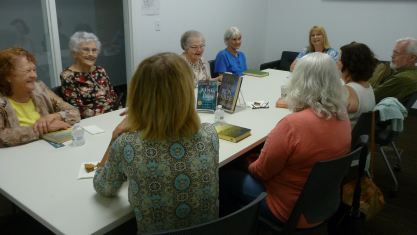

 I used to enjoy fantasy, and then, I’m not sure what happened. Maybe it was too many textbooks to read in college. Maybe it was getting too practical and thinking I had more important things to do. But, whatever the reason, I left fantasy on the shelf.
I used to enjoy fantasy, and then, I’m not sure what happened. Maybe it was too many textbooks to read in college. Maybe it was getting too practical and thinking I had more important things to do. But, whatever the reason, I left fantasy on the shelf. 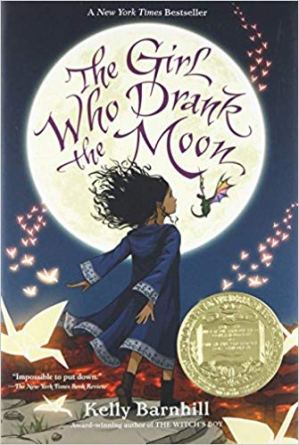 Since the challenge is meant to expand participants’ reading palates, I felt that a young adult fantasy novel would certainly expand mine. The book title that caught my eye was
Since the challenge is meant to expand participants’ reading palates, I felt that a young adult fantasy novel would certainly expand mine. The book title that caught my eye was  It’s a timely reflection for our own times. What stories do we retell over and over that we never examine? What do we believe about people or events just because someone told us? I’m not talking about being cynical or questioning everything, but just about being receptive to the truth. For example, the
It’s a timely reflection for our own times. What stories do we retell over and over that we never examine? What do we believe about people or events just because someone told us? I’m not talking about being cynical or questioning everything, but just about being receptive to the truth. For example, the 
 The Library is brimming with resources for every season. Spring is in the air, and we have a smattering of Spring-related tips, how-tos and ideas on our shelves just waiting to come to life. Take a moment and smell these book-flowers!
The Library is brimming with resources for every season. Spring is in the air, and we have a smattering of Spring-related tips, how-tos and ideas on our shelves just waiting to come to life. Take a moment and smell these book-flowers! Nonfiction 648.5 C76
Nonfiction 648.5 C76 Spring allergies:
Spring allergies: plant a seed to how to make chocolate mint mousse, this book is sure to inspire both outdoors and in! Find it on the shelf in the juvenile section 635 L78.
plant a seed to how to make chocolate mint mousse, this book is sure to inspire both outdoors and in! Find it on the shelf in the juvenile section 635 L78.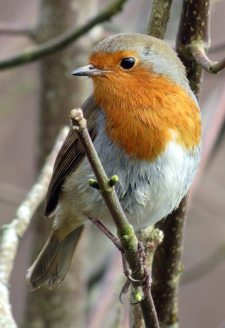 The robin is the one
The robin is the one library. For example, did you know that the children’s room has a bulletin board every month with a different activity? You can do the activity at the Library, or take it home. This month you can make a whimsical cloud mobile.
library. For example, did you know that the children’s room has a bulletin board every month with a different activity? You can do the activity at the Library, or take it home. This month you can make a whimsical cloud mobile.
 When I come to the Library, I see our town. I see young mothers with adorable toddlers struggling to carry an over-sized book. I see teenagers painting murals for Christmas on our windows, and grandmothers who read more books in a week than I will all year. I see aspiring gardeners and knitters and home-improvers. I see people working hard and people relaxing; laboring over math problems and chuckling over Youtube videos.
When I come to the Library, I see our town. I see young mothers with adorable toddlers struggling to carry an over-sized book. I see teenagers painting murals for Christmas on our windows, and grandmothers who read more books in a week than I will all year. I see aspiring gardeners and knitters and home-improvers. I see people working hard and people relaxing; laboring over math problems and chuckling over Youtube videos. because you tend to travel in the same “circuit” around town. For me, it looks something like, work, church, the grocery store and the houses of my friends who generally go to the same church, work, or grocery store as I do. Routines aren’t bad─they’re very helpful. But sometimes I get so absorbed in my rhythm that I miss the voices of people outside of it. It’s kind of like muting the treble and only listening to the baseline of a song: It’s still nice, but it’s missing a lot of the beauty that makes the song a song.
because you tend to travel in the same “circuit” around town. For me, it looks something like, work, church, the grocery store and the houses of my friends who generally go to the same church, work, or grocery store as I do. Routines aren’t bad─they’re very helpful. But sometimes I get so absorbed in my rhythm that I miss the voices of people outside of it. It’s kind of like muting the treble and only listening to the baseline of a song: It’s still nice, but it’s missing a lot of the beauty that makes the song a song. In the interest of hearing more voices and celebrating community, we’d like to invite everyone to write a book together. We’re calling it:
In the interest of hearing more voices and celebrating community, we’d like to invite everyone to write a book together. We’re calling it:  at
at 
 Happy 2019! Of course, I always get a little blue packing up the last Christmas tree ornament and finally acknowledging that the Christmas cookies are
Happy 2019! Of course, I always get a little blue packing up the last Christmas tree ornament and finally acknowledging that the Christmas cookies are 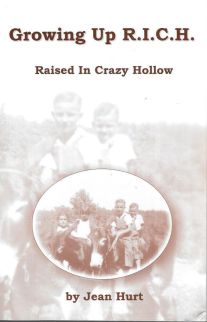 It’s a delightful collection of short stories and poems about her life growing up in Arkansas and Oklahoma during and after the Great Depression. Although a dark time historically in many ways, Hurt’s writing shines with humor. She writes in her dedication: “I have tried to tell about the depression without being depressing.”
It’s a delightful collection of short stories and poems about her life growing up in Arkansas and Oklahoma during and after the Great Depression. Although a dark time historically in many ways, Hurt’s writing shines with humor. She writes in her dedication: “I have tried to tell about the depression without being depressing.”  Hurt’s stories refreshed me with their originality, humor and perspective. Maybe you’d like to be refreshed with a new book too? If so, you’ll be excited about our 2019 Reading Challenge. First of all, there are PRIZES! To participate, pick up a list of categories and choose one that intrigues you (for example, “a nonfiction novel based on a true story”) then find a book that fits the category (I know some helpful librarians if you get stuck here). Read your new book, then pick a new category and start again. Oh, and to get in the drawing for a PRIZE write down your reads on an official reading log at the reference desk. Our first PRIZE is coming from Heart of the Home store downtown. Prizes from more fabulous businesses to follow!
Hurt’s stories refreshed me with their originality, humor and perspective. Maybe you’d like to be refreshed with a new book too? If so, you’ll be excited about our 2019 Reading Challenge. First of all, there are PRIZES! To participate, pick up a list of categories and choose one that intrigues you (for example, “a nonfiction novel based on a true story”) then find a book that fits the category (I know some helpful librarians if you get stuck here). Read your new book, then pick a new category and start again. Oh, and to get in the drawing for a PRIZE write down your reads on an official reading log at the reference desk. Our first PRIZE is coming from Heart of the Home store downtown. Prizes from more fabulous businesses to follow!
